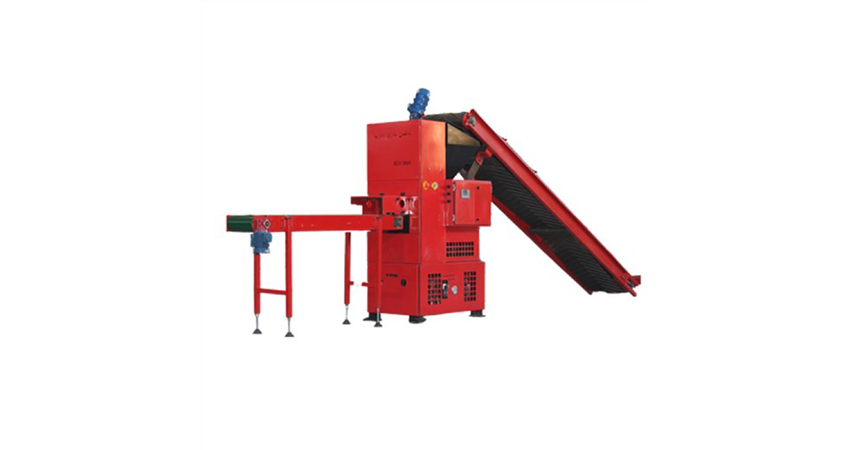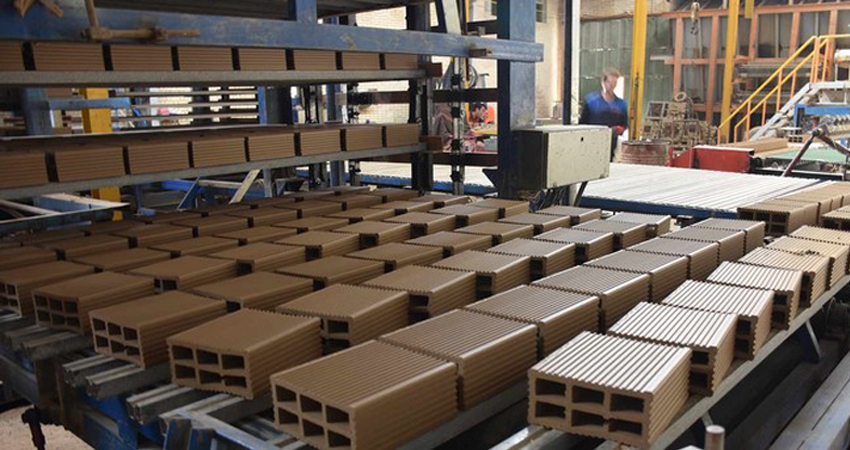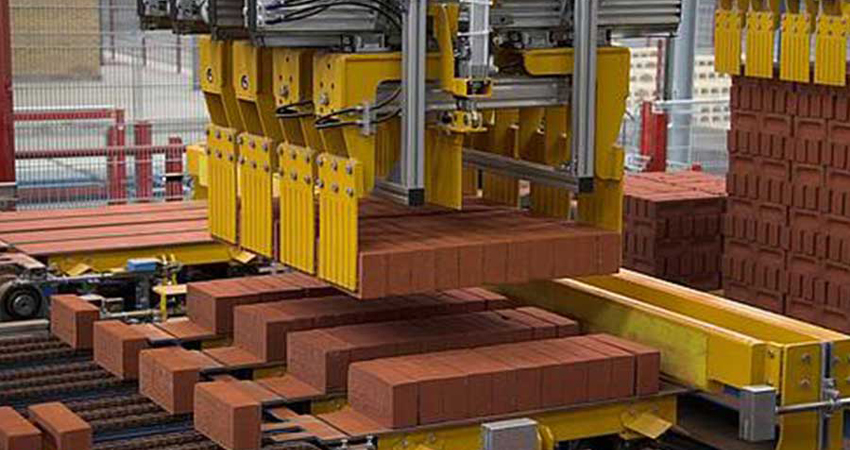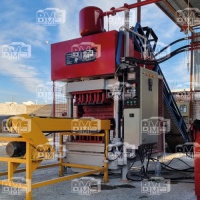Depending on their type and dimensions, types of bricks are used in various fields, including flooring, paving, foundations, building facades, and interior decoration. The history of brick production and its use in Iran dates back several thousand years. Archaeologists have discovered brick kilns dating back to 2000 BC in the cities of Kashan and ancient Susa. Today, with the advancement of technology, new machines are used to make these types of blocks. In this article, we intend to examine the types of brick production machines and the components of the production line for these building materials. Also, if you want to know about the price of this equipment and the cost of setting up a brick production line, stay tuned with us.
Types of Brick Production Machines
In this section, you will learn about the machines used to produce and make various types of bricks. The prices of this equipment vary in the market. You can make the best choice among various types of building material manufacturing equipment by contacting the consultants of the Sarmad Foundation of Knowledge-Based Concrete Company.
- Pressed or Gray Brick Production Machine
Clay is the main ingredient of pressed or gray bricks. These building materials are made by several methods, including the traditional method and the automatic pressed brick manufacturing machine. The traditional or manual method is obsolete, but in the modern method, all stages, including mud preparation, molding, transfer to silo, drying and baking, are carried out automatically by the pressed block production line. The new equipment used in this method produces the desired materials without the need for a kiln.
- Lefton Brick Production Machine
Lefton or ten-hole brick is one of the most widely used building materials in construction, and its strength and durability are very important. The equipment for making this type of block allows manufacturers to avoid using a kiln during the operation. That is, after the blocks are produced by the Lefton two-mold brick machine, there is no need to bake them in a kiln, and the materials reach the desired strength with a curing operation between 8 and 18 hours.
- Facade brick production machine
Facade bricks are lighter in weight than ordinary types and have a variety of colors. These building materials are divided into different types according to their characteristics, including chamotte, plaque, rustic, wicker, shutter, glazed and refractory. Refractory facade bricks are one of the most popular and widely used types of building materials for building facades.
Today, various devices have been introduced to the market for the manufacture of this type of building material, which work automatically and without the need for human intervention. For example, the puzzle brick machine has simplified the process of producing brick facades without the need for a kiln or firing. Puzzle blocks are produced and marketed in two models: regular and refractory. This type of building material comes in different colors and designs and is used in various fields including wall cladding, landscaping, fireplace construction, and building facades.
- Cement block production machine
Cement blocks are produced in two ways: traditional and modern. In the modern method, cement blocks are made by cement block production equipment, and the entire manufacturing process is done automatically. Types of cement block making machines have different prices depending on their type.

Price range of brick production machines
When buying a brick making machine, price is probably the first thing you will pay attention to. To buy this type of equipment, you must first determine how much your budget is. But in general, the price of a brick making machine is affected by various factors, including the manufacturer, capacity, quality, type and efficiency of the machine. Of course, other factors such as market fluctuations and sales centers also affect the price of block making machines.
You can buy all kinds of block making machines in the price range of 50 million to 300 million Tomans. These machines are designed and manufactured according to the customer's order and needs. As one of the main suppliers of brick production machines in Iran, Afraz Beton Sarmad Company provides its equipment at the most reasonable price. This set of industrial machines designs and produces its own customized machines using the latest technologies. All the parts used in Afraz Beton Sarmad machines are among the best and highest quality parts available on the market.
The block and brick machines of this set are delivered with a valid warranty and long-term after-sales service. The price offered by Afraz Beton Sarmad is very fair and is competitive after analyzing competitors. So that you cannot find such equipment anywhere in Iran at this company's price. If you would like to know the prices of various brick making machines, please contact the numbers listed on the site to receive free advice and to learn about current prices.

Brick production line components
Various equipment and machines are used in brick making factories. Each of these parts has its own specific function and together they form an automatic production line. In the following, we will examine each of these machines and their functions.
- Box Feeder
The box feeder is responsible for storing and transporting the mud along the production line. With the help of this device, the operation of the brick production line will be automated to a significant extent. In some stages of brickmaking, the mud needs to remain stationary for several hours to mix well with water. This process is carried out in silos. Due to their closed surroundings, the silos have the ability to store the mud and prevent it from leaking out.
- Milling Machine
These machines are located at the beginning of the production line and pulverize the coarse soil particles entering the line. These devices have a capacity of between 20 and 50 tons per hour. The power required by the pulverizers is supplied by an electric motor and is transmitted to the crushing blades by several belts.
- Mixer
This equipment is used to mix soil with water and create a uniform mud with the desired moisture content. In fact, the mixer removes air from the chamber by sucking in the air and making the mud uniform. This action will increase the strength of the block. Finally, a tube connected to a vacuum pump is placed inside the mixer and evacuates the air inside the chamber.
- Roller Mill
After the mud is well mixed in the mixer, it is passed through a roller mill to achieve high quality. This machine, with the help of two rotating rollers, causes the mud to layer. This plays an important role in preparing the mud and increasing its quality. Of course, the resulting clay is re-entered into the vacuum mixer to remove air from it to achieve the desired quality.
- Extrude Machine
The clay removed from the vacuum mixer enters the press machine to create the desired block shape. This machine uses a mechanical mechanism to compress the clay and pass it through a mold. The drive system of this press includes two types of solar and manual gearboxes that will be designed and manufactured according to the needs of the location and the desired capacity. Finally, the cutting machine cuts the blocks into the desired dimensions.
- Dryer
Clay drying is done in two ways: old-fashioned (sunlight) or using a drying machine. In the dryers, the temperature of the brick increases to about 80 degrees Celsius.
- Kiln
In the final stage of the brick production line, the dried brick enters a kiln at a temperature of 900 to 1100 degrees Celsius for 12 to 20 hours. There are different types of kilns, the most common of which are the Hoffman and tunnel kilns. After leaving the kiln and cooling, the blocks will be packaged and sent to the market.

Cost of setting up a brick production line
Bricks are used in different parts of the building. In fact, the high resistance of these building materials to heat has led to their use in other industries besides the construction industry. For example, refractory bricks are used to build ovens for cooking halls and wood-burning stoves.
The cost of setting up a brick production line varies and cannot be specified as a specific amount, as this depends on the type of block production machine and other equipment used in the production line. The more advanced and modern the machinery you choose, the higher its price. Of course, more advanced equipment can produce more materials in a shorter period of time and bring you more profit. In fact, the greater profitability of these machines justifies their high price.
It can be said with certainty that the return on investment in this field is high. You can very quickly achieve the capital spent on setting up a brick production line. Of course, the amount of income from this profession also varies depending on various factors. For example, if you buy your high-quality equipment from Afraz Beton Sarmad, you will definitely have more products. The modern equipment of this complex will reduce your need for manpower and increase your income.

